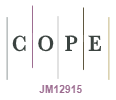Qualitative insights into Australian consumers’ views for and against government action on sugary drinks
Caroline Miller A B * , Annette Braunack-Mayer C , Melanie Wakefield D , David Roder E , Kerin O’Dea F , Joanne Dono B and Kerry Ettridge B G
+ Author Affiliations
- Author Affiliations
A
B
C
D
E
F
G
* Correspondence to: caroline.miller@sahmri.com
Public Health Research and Practice 31, e30122003 https://doi.org/10.17061/phrp30122003
Published: 9 June 2021


